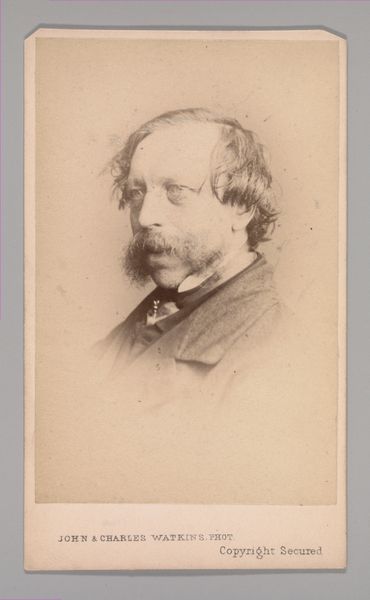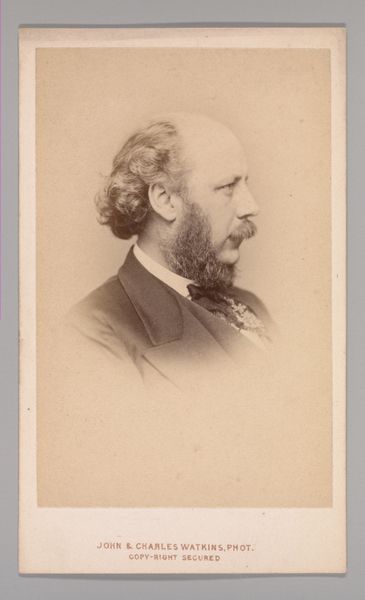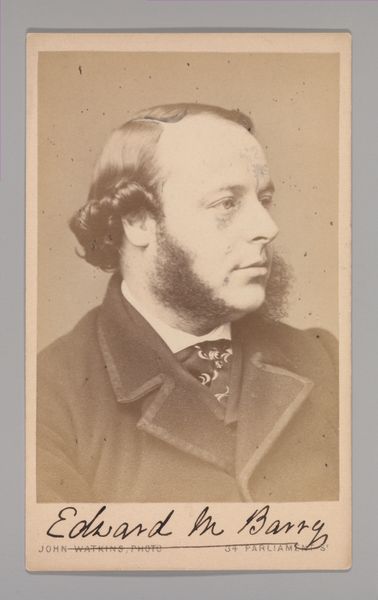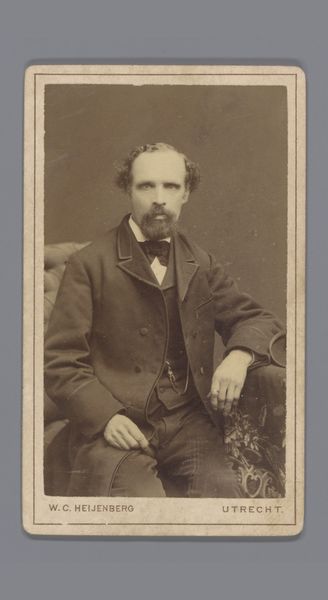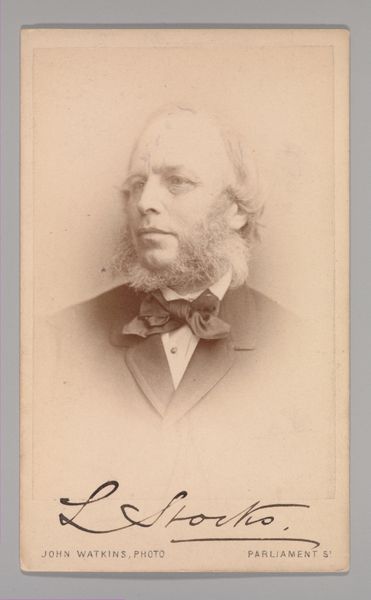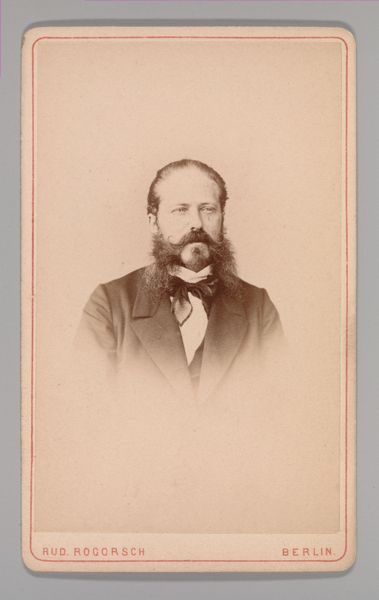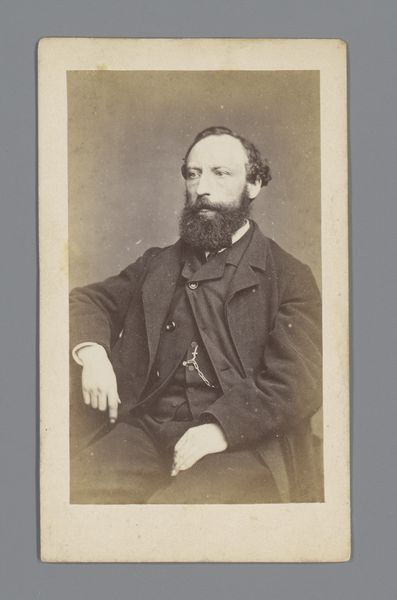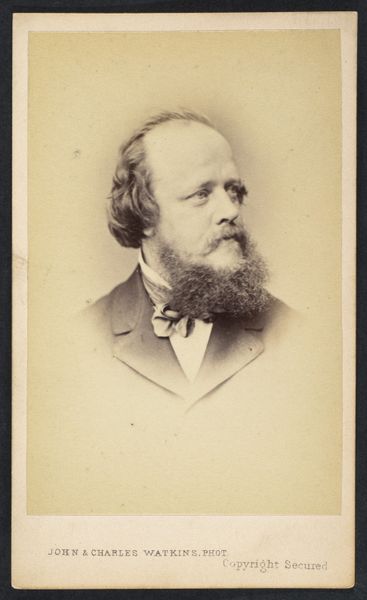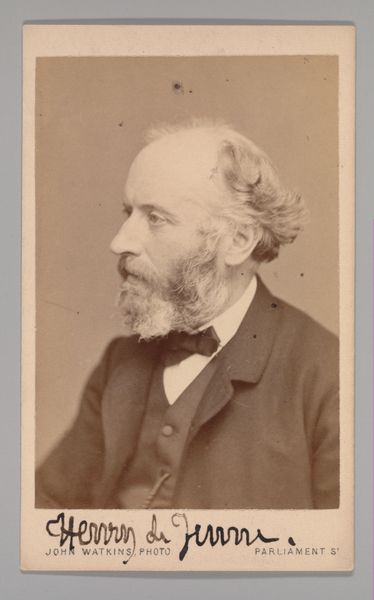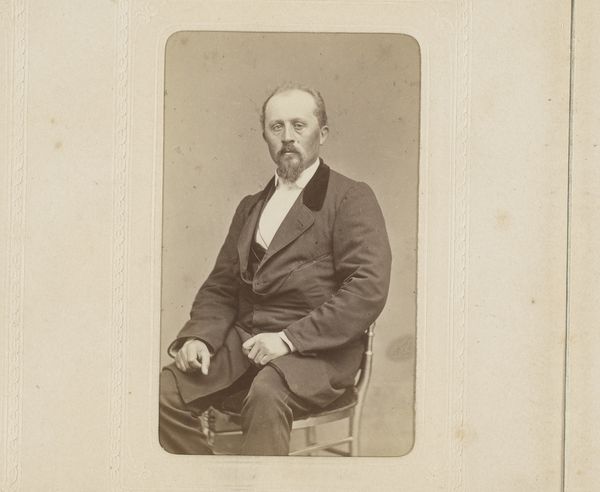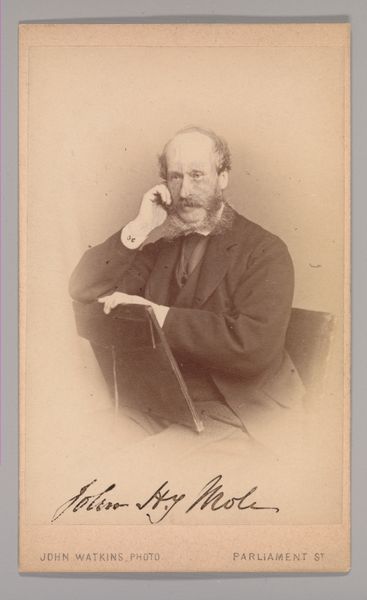![[Charles Baxter] by John and Charles Watkins](/_next/image?url=https%3A%2F%2Fd2w8kbdekdi1gv.cloudfront.net%2FeyJidWNrZXQiOiAiYXJ0ZXJhLWltYWdlcy1idWNrZXQiLCAia2V5IjogImFydHdvcmtzL2Y2NDExZTU5LTVlNjQtNGU1ZC05ZWM1LTRkYmM4YzU2Njk2NC9mNjQxMWU1OS01ZTY0LTRlNWQtOWVjNS00ZGJjOGM1NjY5NjRfZnVsbC5qcGciLCAiZWRpdHMiOiB7InJlc2l6ZSI6IHsid2lkdGgiOiAxOTIwLCAiaGVpZ2h0IjogMTkyMCwgImZpdCI6ICJpbnNpZGUifX19&w=3840&q=75)
photography, gelatin-silver-print, albumen-print
#
portrait
#
photography
#
gelatin-silver-print
#
genre-painting
#
albumen-print
Dimensions: Approx. 10.2 x 6.3 cm (4 x 2 1/2 in.)
Copyright: Public Domain
Curator: This is a portrait of Charles Baxter, created in the 1860s by John and Charles Watkins. It's an albumen print, now residing here at The Met. Editor: There's a somber, almost contemplative quality to it. The soft gradations of tone lend a dreamlike air, even with the subject's direct gaze. It’s a tight composition, really holding you on his face. Curator: Watkins was a successful photography studio in London. In terms of the studio's context, photographic portraits gained traction because it catered to middle-class consumers looking to partake in the Victorian era's "cult of celebrity", as it were, and also partake in that culture. The use of albumen prints suggests affordability but also high quality. It strikes a balance. Editor: I find the detail in the rendering of his hand and the way it supports his face particularly compelling. It seems so carefully posed and composed. And also it is so obviously "of the time" with such detail captured in the beard. Look at that little ring! How does its glint draw your eye so easily? Curator: The act of posing itself in Victorian photography reveals societal values. Note his dignified stance. What Watkins offered his clients was more than mere representation; it was social currency in a society where likeness conferred respectability. We have the "genre-painting" tag here as well. It reveals aspirations of emulating a tradition reserved for painted images. Editor: Thinking about structure, the light seems to define form subtly. His face emerges almost sculpturally. The tones used emphasize texture without heavy contrast and contribute greatly to the mood we mentioned earlier. It keeps my eye wandering his face looking for more. Curator: Absolutely, the emphasis on tone is very strategic given that we know photographic studios back then manipulated variables in their work to meet their audiences’ aesthetic standards. To some extent they also tried to capture not only their subject’s likeness, but his social standing as well. Editor: Studying his thoughtful posture closely makes me curious about who he really was. There is an echo of quiet elegance to it. Curator: And for those interested in the Victorians' projection of values, I'm sure his biography holds even greater appeal. Editor: Exactly, and for the casual viewer there's an artistic value in exploring the arrangement of photographic tones.
Comments
No comments
Be the first to comment and join the conversation on the ultimate creative platform.
